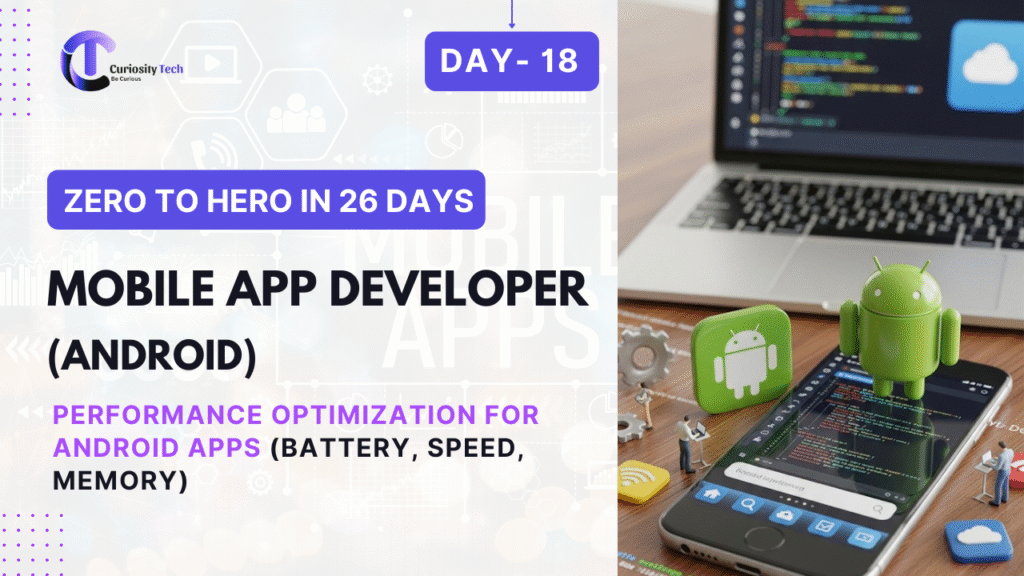Introduction
A good Android app is not just about features—it’s about performance. Users uninstall apps that drain their battery, lag while scrolling, or crash under memory pressure. In fact, Google research shows that 53% of users abandon apps that take more than 3 seconds to load.
At CuriosityTech.in (Nagpur, Wardha Road, Gajanan Nagar), we constantly remind our learners: “Performance is invisible when it’s good, but painfully obvious when it’s bad.” This article dives deep into battery optimization, speed improvements, and memory management in Android apps, with real problems and solutions.
Performance Problems in Android Apps
| Dimension | Symptoms | User Impact |
| Battery | Fast draining, phone heating | Uninstalls, negative reviews |
| Speed | Slow startup, laggy navigation | Frustration, low engagement |
| Memory | Crashes on low-RAM devices | Loss of trust, poor ratings |
Battery Optimization
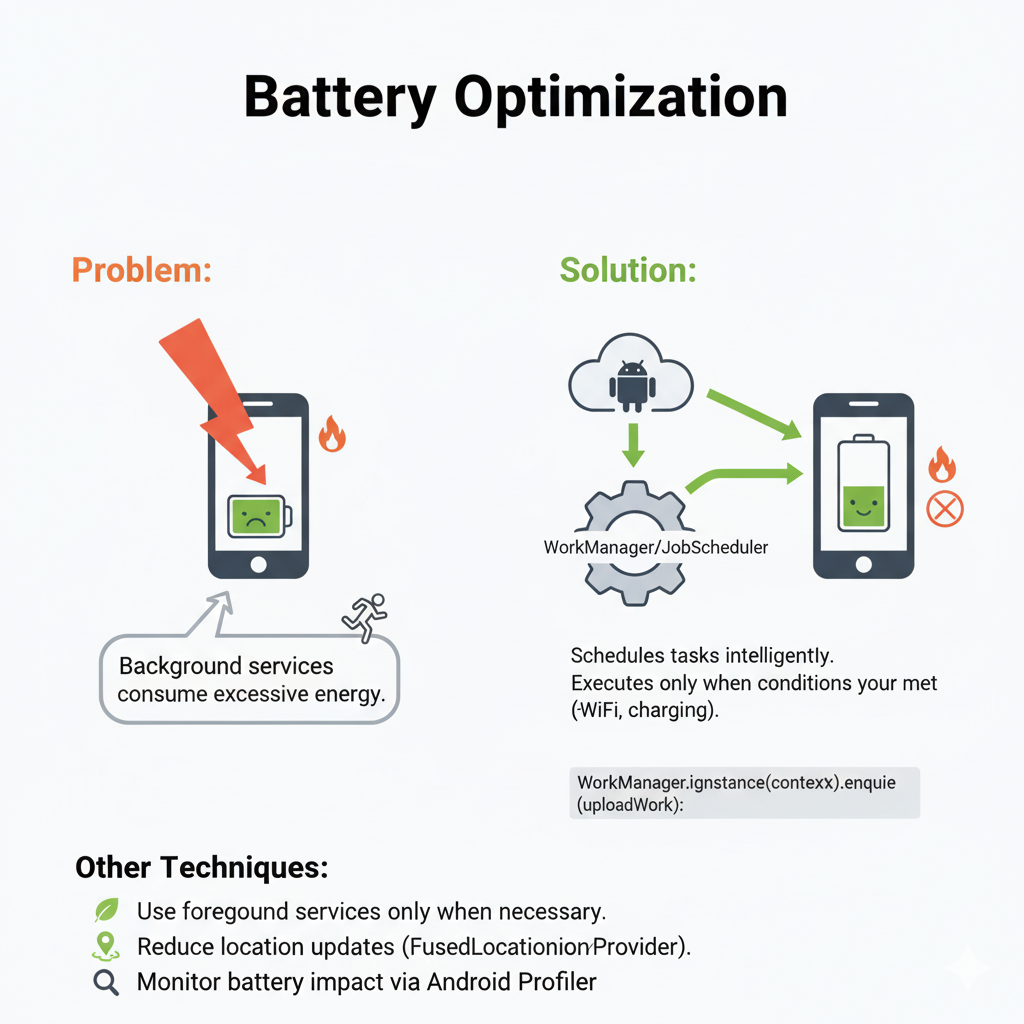
Problem: Background services consume excessive energy.
- Apps like messengers or fitness trackers often keep running, draining the battery.
Solution: Use WorkManager or JobScheduler instead of manual background services.
WorkRequest uploadWork = new OneTimeWorkRequest.Builder(UploadWorker.class).build();
WorkManager.getInstance(context).enqueue(uploadWork);
- Schedules tasks intelligently.
- Executes only when conditions (Wi-Fi, charging) are met.
Other Techniques:
- Use foreground services only when necessary.
- Reduce location updates (use FusedLocationProvider with balanced accuracy).
- Monitor battery impact via Android Profiler.
Speed Optimization
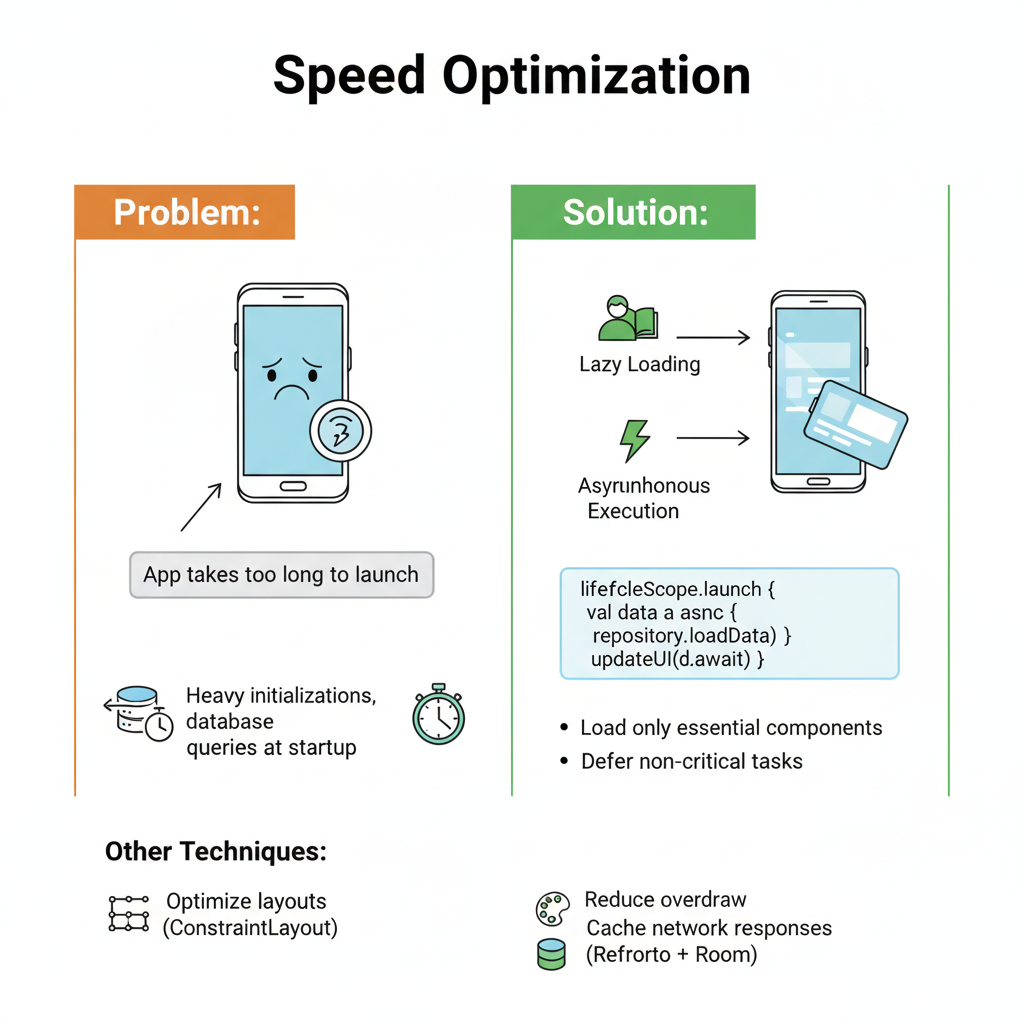
Problem: App takes too long to launch.
- Causes: heavy initializations, database queries at startup.
Solution: Lazy loading & asynchronous execution.
lifecycleScope.launch {
val data = async { repository.loadData() }
updateUI(data.await())
}
- Load only essential components during launch.
- Defer non-critical tasks to later.
Other Techniques:
- Optimize layouts (use ConstraintLayout, avoid deep nested views).
- Reduce overdraw (don’t stack unnecessary layers).
- Cache network responses (Retrofit + Room).
Memory Optimization
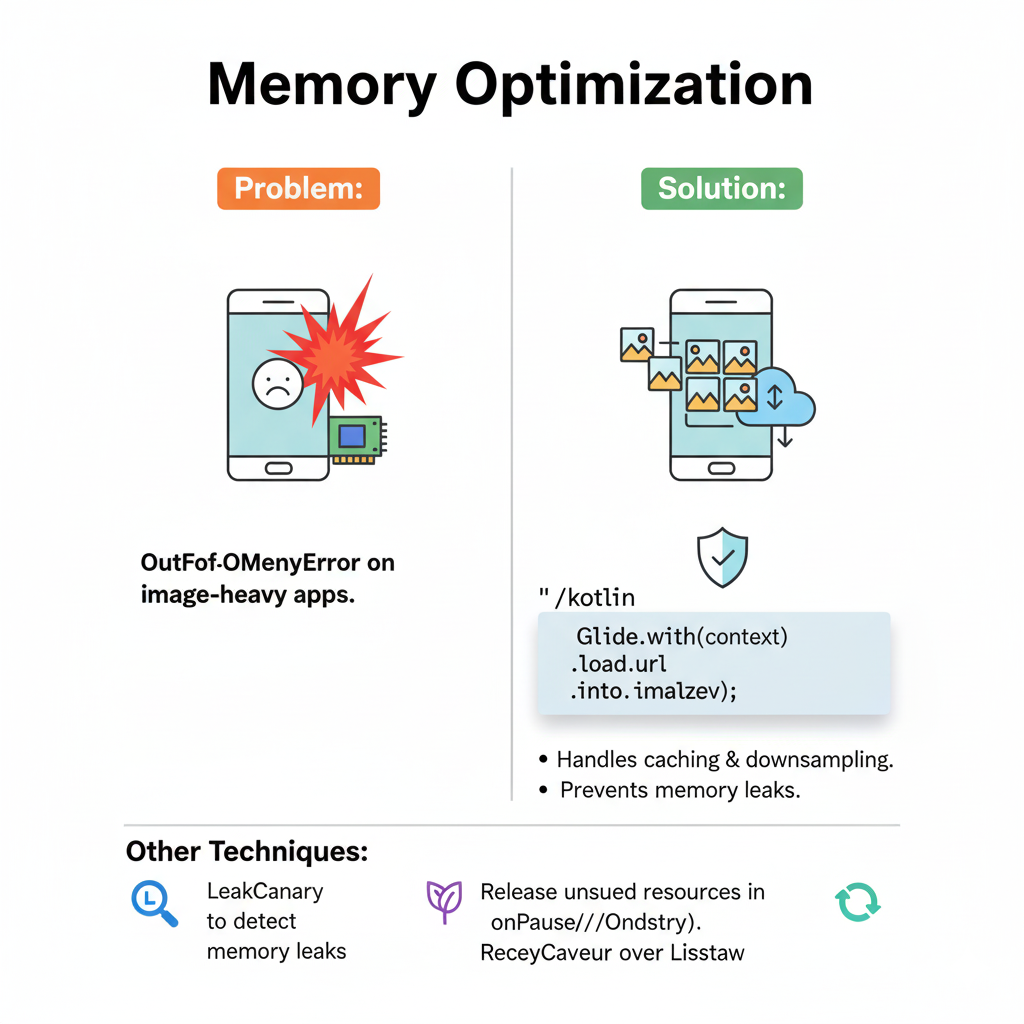
Problem: OutOfMemoryError on image-heavy apps.
Solution: Use efficient image loading libraries like Glide or Coil.
Glide.with(context)
.load(url)
.into(imageView);
- Handles caching & downsampling.
- Prevents memory leaks.
Other Techniques:
- Use LeakCanary to detect memory leaks.
- Release unused resources in onPause()/onDestroy().
- Prefer RecyclerView over ListView for better memory usage.
Diagram – Layers of Performance Optimization
graph TD
A[Battery Optimization] –> B[Background Task Scheduling]
A –> C[Efficient Location Updates]
D[Speed Optimization] –> E[Lazy Loading]
D –> F[UI Optimization]
G[Memory Optimization] –> H[Efficient Image Handling]
G –> I[Leak Detection]
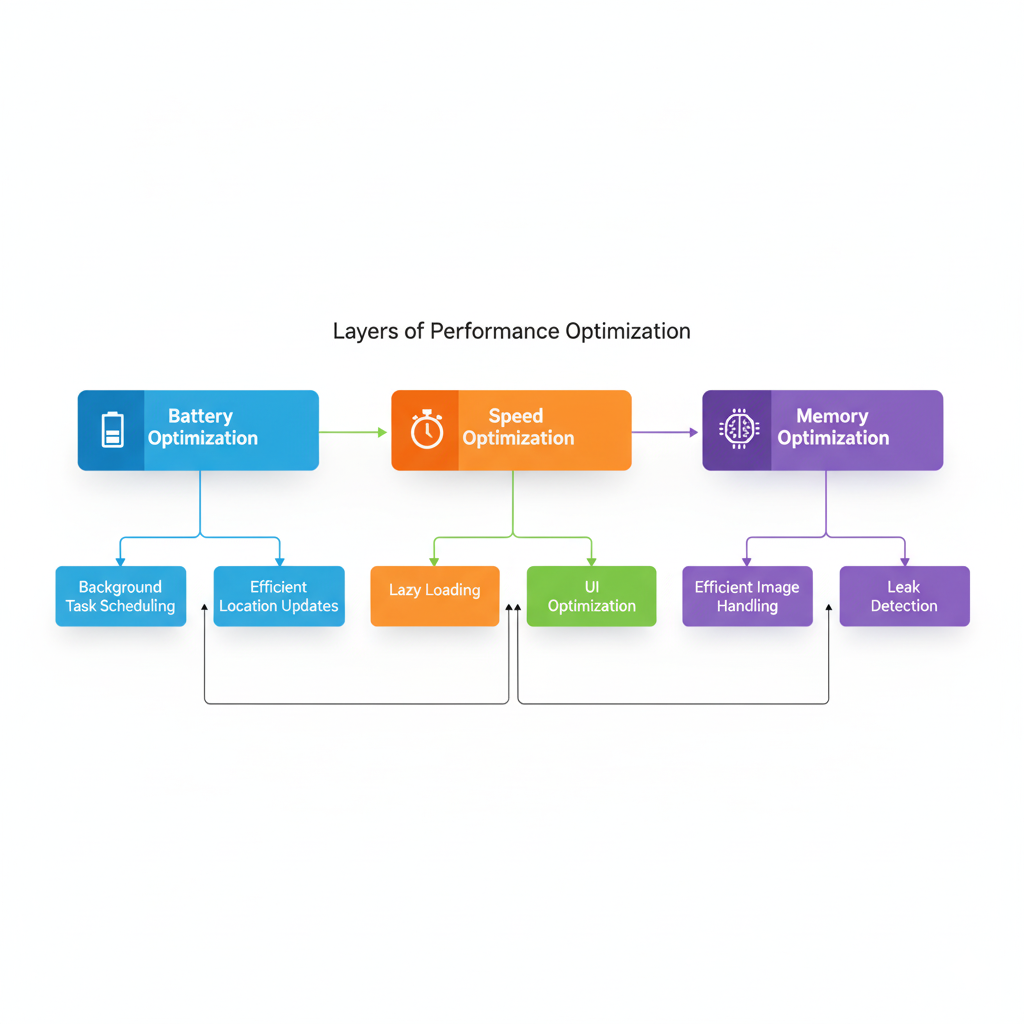
Real-World Example – Social Media App Case Study
One of our students at CuriosityTech Nagpur built a photo-sharing app similar to Instagram. Initially:
- Battery drained quickly due to GPS updates every 2 seconds.
- App lagged because all posts were loaded at once.
- Crashed on 2GB RAM devices because images were not compressed.
After optimization:
- Used WorkManager for location.
- Implemented paging for posts.
- Adopted Glide for images.
Result: Battery usage dropped by 40%, speed improved by 3x, and memory crashes reduced to zero.
Best Practices for Developers
| Area | Best Practice | Tool |
| Battery | Schedule background tasks | WorkManager, JobScheduler |
| Speed | Optimize layouts & use async loading | Android Profiler |
| Memory | Detect leaks early | LeakCanary, Glide, Coil |
Becoming an Expert in Performance Optimization
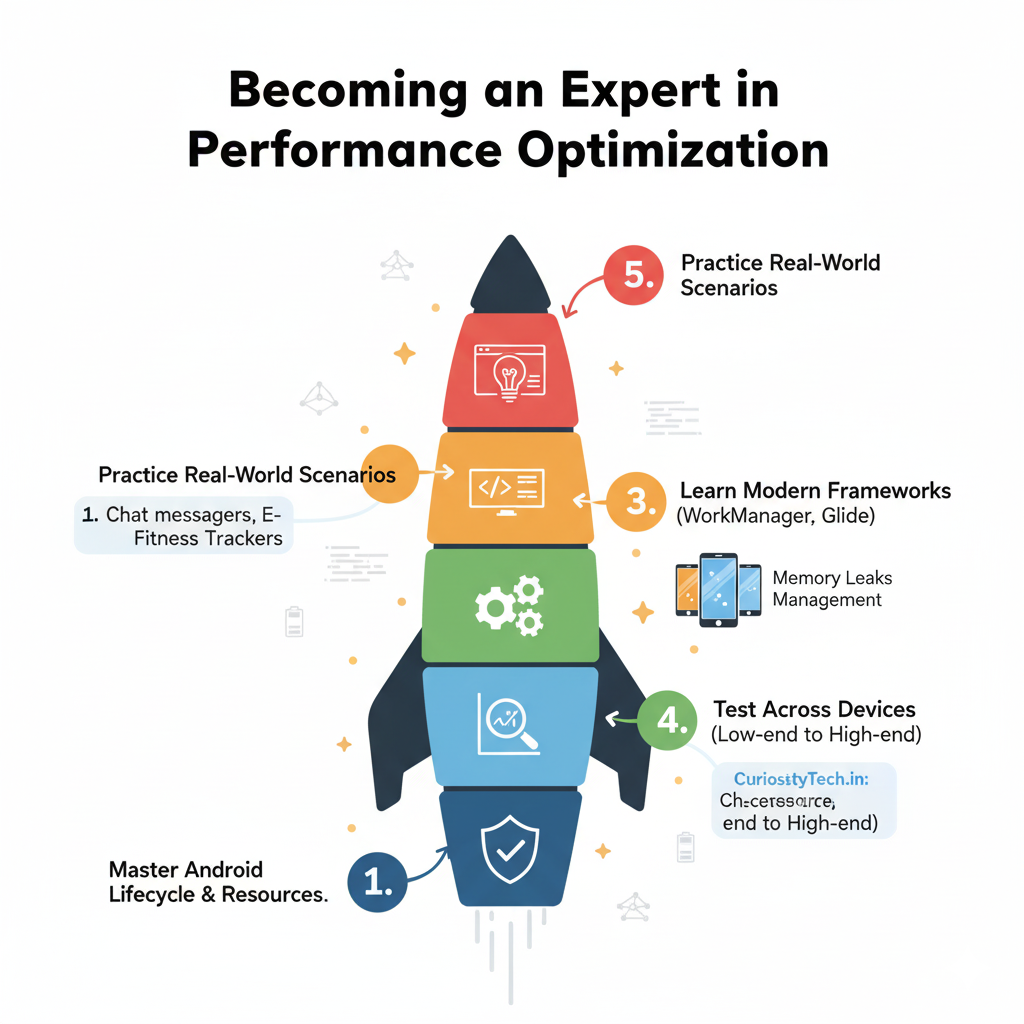
- Understand Android lifecycle to manage resources properly.
- Profile apps regularly with Android Studio tools.
- Learn frameworks like WorkManager, Paging3, Glide.
- Test across devices (low-end to high-end).
- Practice real-world scenarios—at CuriosityTech.in, learners optimize apps like chat messengers, e-commerce stores, and fitness trackers, gaining hands-on experience.
Conclusion
Performance is the silent salesman of an app. Users may not praise optimized apps, but they quickly abandon sluggish ones. As an Android developer, your ability to balance battery, speed, and memory will set you apart.
To sharpen these skills, you can connect with CuriosityTech.in via contact@curiositytech.in, call +91-9860555369, or visit our Nagpur center. Our mentors guide developers through real optimization projects, ensuring you don’t just write code—you build apps that delight users without draining their devices.

